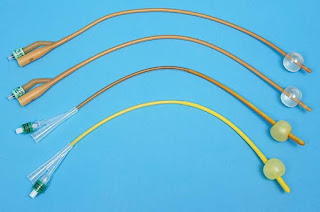A Flexible Tube Known As An Indwelling Catheter Is Used In Urology To Drain Urine. A Doctor Inserts It Via The Urethra And Into The Bladder
 |
Indwelling Catheters Market |
A urinary catheter that is left
in the bladder is known as an indwelling catheter. An indwelling catheter may
be used for a short while or for a long time. Urine is collected using an
indwelling catheter that is connected to a drainage bag. Urine may be released
from the bag by opening a valve on it. Some of these bags might be fastened to
a leg. The majority of Indwelling Catheters are not designed to be used for
longer than three months, thus they must be replaced often.
The two primary forms of urinary
catheters are: indwelling catheters, which are put into the bladder either by
the urethra or the stomach wall and are kept there for a while. Intermittent
catheters are those that are placed numerous times each day via the urethra
into the bladder to empty it. The majority of Indwelling Catheters should not be
used for longer than three months and should be replaced often. There are two
types of indwelling catheters, which remain inside the body for a longer time.
A suprapubic indwelling catheter is put via the pubis and into the bladder,
whereas a urethral indwelling catheter is introduced through the urethra.
Similar to an intermittent catheter, an indwelling urinary catheter is
implanted, but it is left in place.
A water-filled balloon keeps the
catheter in the bladder and prevents it from escaping. These catheters are frequently
referred to as Foley catheters. For many patients, Indwelling Catheters are seen as a crucial medical procedure.
However, due to the danger of several possible side effects, including
catheter-associated urinary tract infections (CAUTIs), and the related cost
burden on healthcare organisations, these devices should only be used with
caution. A catheter is a small, flexible tube that is frequently constructed of
soft plastic that may be placed into the bladder through the urethra. Medical
practitioners recommend catheters, which are referred to as medical devices.
There are two types of indwelling
catheters, which remain inside the body for a longer time. A suprapubic
indwelling catheter is put via the pubis and into the bladder, whereas a
urethral Indwelling Catheter is introduced through the urethra. Professionals
in the medical field install Indwelling
Catheters, which are then kept inside the body as long as necessary. They
are frequently replaced every month or every other month for long-term use.
This length of time raises the chance of infection from having anything within
the body.



Comments
Post a Comment